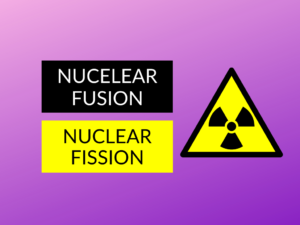Difference Between Nuclear Family and Joint Family
Introduction
A family is a fundamental unit of society, and it comes in various forms. Two common types of family structures are nuclear family and joint family. Understanding the differences between these family types can provide insights into their dynamics, benefits, and challenges. In this article, we will explore the characteristics and uses of nuclear family and joint family, and highlight their key differences.
What is a Nuclear Family?
A nuclear family is a basic family unit consisting of parents and their children. This family structure typically includes a married couple living together with their biological or adopted children. It is commonly known as a “small family” because of its limited size and membership.
Examples of Nuclear Family
- A couple living with their two children in an apartment.
- A single parent raising their child on their own.
- A childless couple living independently in their own house.
Uses of Nuclear Family
The nuclear family structure offers several advantages, including:
- Greater privacy and independence.
- Efficient decision-making process.
- Easier financial planning and management.
- Flexibility in lifestyle choices.
- Enhanced focus on individual development and opportunities.
What is a Joint Family?
A joint family, also known as an extended family, is a family structure that includes multiple generations living together under one roof. It typically consists of parents, their children, grandparents, aunts, uncles, and cousins. In this arrangement, the family shares resources, responsibilities, and supports each other emotionally and financially.
Examples of Joint Family
- Grandparents residing with their married children and grandchildren in a large ancestral home.
- Multiple siblings, along with their families, living together in a joint family setup.
- Several related families sharing a common space and resources for economic reasons.
Uses of Joint Family
A joint family structure can provide several benefits, such as:
- Strong emotional support system within the family.
- Division of labor and shared responsibilities.
- Financial security through pooled resources.
- Preservation of family traditions and cultural values.
- Opportunities for social interactions and bonding.
Differences Between Nuclear Family and Joint Family
| Difference Area | Nuclear Family | Joint Family |
|---|---|---|
| Family Size | Small, consisting of parents and children. | Large, including parents, children, grandparents, and other relatives. |
| Living Arrangement | Generally in separate houses or apartments. | Together in a common household. |
| Decision Making | More individualistic decision-making process. | Collective decision-making involving multiple family members. |
| Financial Responsibility | Parents bear the primary financial responsibility. | Shared financial responsibility among family members. |
| Dependency | Less interdependence among family members. | Higher interdependence among family members. |
| Privacy | Greater privacy and personal space. | Reduced privacy due to shared living arrangements. |
| Support System | Relies more on external support systems. | Built-in support system within the family. |
| Family Bonding | Focused on immediate family bonds. | Strong emphasis on extended family bonds. |
| Adaptability | More adaptable to changing circumstances. | Less adaptable due to complex family dynamics. |
| Child Rearing | Parents have more control over child upbringing. | Shared responsibility and influence from various family members. |
Conclusion
In summary, nuclear family and joint family structures have distinct characteristics and utilization. A nuclear family offers greater privacy and independence, enhanced decision-making, and individual development opportunities. On the other hand, a joint family provides a strong emotional support system, shared responsibilities, financial security, and cultural preservation. Understanding these differences can help individuals make informed choices regarding their family structure based on their preferences and circumstances.
People Also Ask
- What are the advantages of a nuclear family?
- What are the advantages of a joint family?
- Is a nuclear family better than a joint family?
- Can a joint family system cope with changing times?
- What are the disadvantages of a joint family?
The advantages of a nuclear family include greater privacy, efficient decision-making, easier financial planning, flexibility, and enhanced focus on individual development.
The advantages of a joint family include strong emotional support, division of labor, shared financial responsibilities, preservation of cultural values, and opportunities for social interactions.
There is no definitive answer to this question as both family structures have their own benefits and challenges. The choice depends on individual preferences, values, support systems, and cultural influences.
Yes, a joint family system can adapt to changing times, but it may require open communication, mutual understanding, and flexibility among family members to address modern societal needs.
The disadvantages of a joint family include reduced privacy, complex family dynamics, potential conflicts, lack of personal space, and difficulty in adapting to individual lifestyles and preferences.


